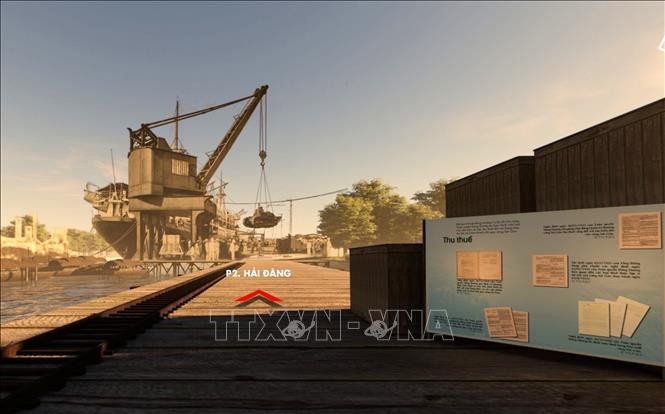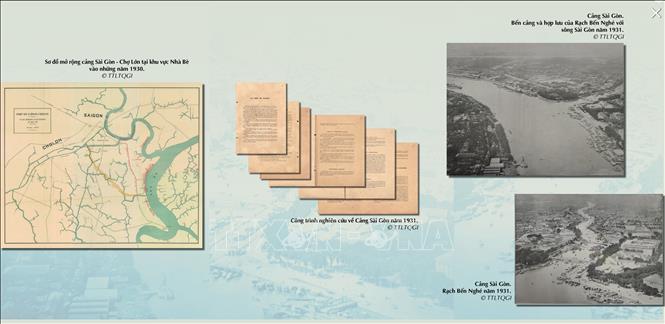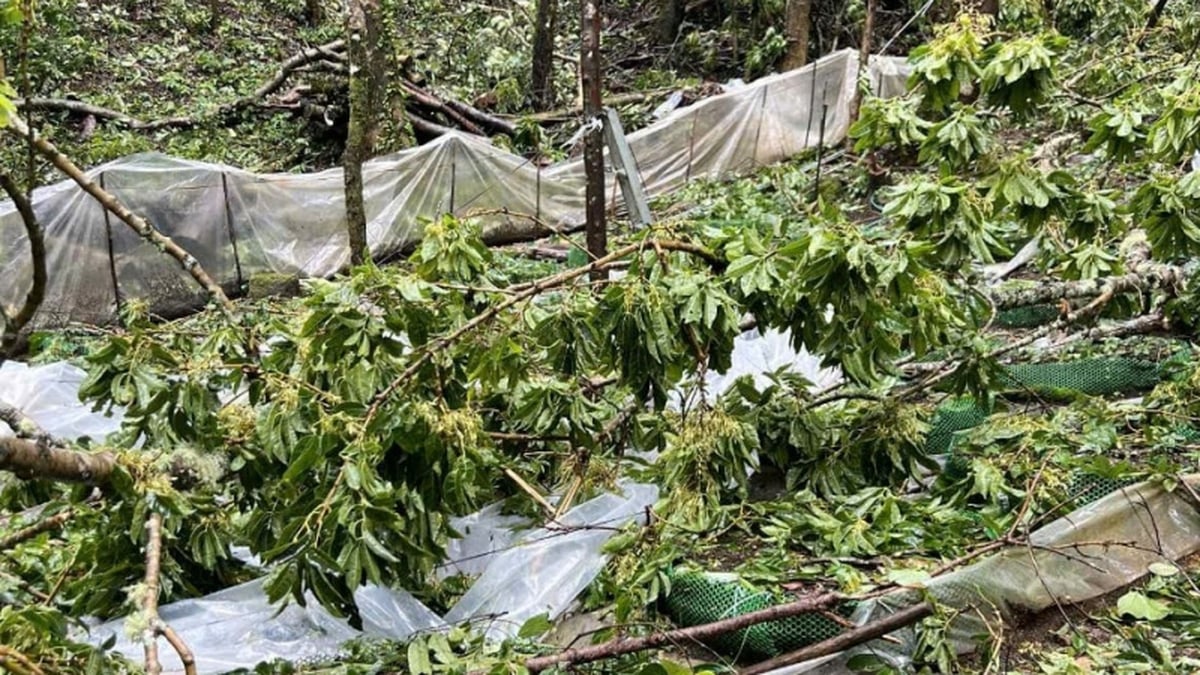Online Exhibition Space "Ancient Ports: From Indochina to the World ". Photo: VNA
The exhibition introduces about 200 unique documents and images about the planning process of seaports, lighthouses as well as maritime transport activities in Indochina in the late 19th and early 20th centuries, many of which are published for the first time.
The exhibition consists of 3 parts: Part 1, Seaports - Gateways for trade and penetration; Part 2, Lighthouses - God's eyes guarding the sea; Part 3, Maritime transport - Connecting horizons. In the elaborately designed sea and island space, the exhibition takes viewers to many locations in the three regions of the North, Central and South to look back at the development process of international gateways at sea as well as the history of the "eyes" of the blue ocean.
Seaports are not only important trading gateways. Historically, great powers have also used the strategic location of seaports as a springboard for colonial invasion. In order to exploit the fertile Indochina, before the 19th century, foreign merchants frequented Vietnam's seaports to conduct trade. This was also where foreign missionaries landed before penetrating the interior to spread their religion, paving the way for Western intervention in Vietnam.
After invading our country, the French had ambitions to build a series of seaports along the East Sea coast such as Saigon, Da Nang , Hai Phong, Hon Gai - Cam Pha, Ben Thuy, Quy Nhon, Nha Trang, Cam Ranh, Ha Tien... However, for many reasons, especially financial reasons, many projects were approved but not implemented, such as the Da Nang port project. In parallel with the construction and renovation process, the system of documents serving the management and operation of seaports has also been gradually improved.
The birth of the port system contributed to promoting colonial trade, helping Indochina gradually penetrate world trade as well as helping France prove its intervention in this land.
Part 1 of the exhibition introduces three major seaports: Hai Phong Port, Da Nang Port and Saigon Port. Thanks to a modern system of wharves and piers, Hai Phong Port is capable of receiving ships with large drafts. Around the 1930s, about 800 large ships with a capacity of nearly 2 million tons passed through the port each year, with cargo transportation services exceeding 1 billion francs. The main exports through Hai Phong Port were rice, cement and coal.
Along with the port network, lighthouses play a key role in helping offshore ships navigate, signal navigation, and indicate the location of dangerous underwater obstacles. Lighthouses are usually in the shape of a tower, formerly illuminated by fire, but today use a system of lights and lenses. Lighthouses symbolize the eternal light of the sea and are known as the “eye of the ocean”.
The Royal Records show that the Nguyen Dynasty paid attention to the construction and renovation of lighthouses to serve the activities of ships. During the French period, a series of lighthouses were built, contributing to the development of maritime infrastructure, thereby creating favorable conditions for colonial exploitation.
According to a report by the Chief of the Waterway Department in 1895, lighting and placing coastal markers were the top priorities in the public works program of the Central and Northern protectorate government in the late 19th century. In the 1880s and 1890s, the French rushed to build lighthouses on many islands from North to South. After that, they proposed many regulations related to the recruitment of guards and the collection of lighthouse fees.
Document introducing Saigon Port. Photo: VNA
The exhibition takes visitors to Hon Dau lighthouse, Ly Son lighthouse, and Ke Ga lighthouse. Ly Son lighthouse is a project within the framework of the program of lighting and placing markers on the coast of Bac Ky and Trung Ky. The project was included in the program by the Indochina Public Works Department in 1897. With a tower height of 47.2m, this is considered the tallest lighthouse in Vietnam to date and has an important position in maritime traffic.
The completion of infrastructure including seaports, lighthouses linked to the road and railway systems has strongly promoted maritime transport activities in Indochina. Part 3 of the exhibition showed the important role of maritime transport in promoting import and export. With the ability to transport large and continuous goods, maritime transport is a bridge between markets, making global trade easier and more efficient.
According to researcher Tran Duc Anh Son, because King Gia Long was aware of the importance of ships in building naval forces, transportation and economic development, the number of ships in Vietnam increased rapidly under the Nguyen Dynasty.
After conquering Indochina, in order to promote colonial exploitation, the French built infrastructure including a system of seaports and lighthouses, and linked it to a multimodal transport system, especially railways. Using this system, the main French fleets contributed effectively to the transport of people and goods between Indochina and the motherland as well as other countries and territories. Major French shipping companies, such as the Messageries Maritimes Company and the Chargeur Réunis Company, developed strongly during this period thanks to the above transport contracts.
According to VNA
Source: https://baoangiang.com.vn/trien-lam-truc-tuyen-hai-cang-xua-tu-dong-duong-ra-the-gioi-a418887.html





































































































Comment (0)